The Process and Tools You Need To Do Brand Strategy

“Begin with the end in mind.”
One of the ‘Seven Habits of Highly Effective People’, and common sense, you might say.
But very unhelpful if you’re trying to learn how to do brand strategy.
Because here’s what happens.
When people try and learn how to do brand strategy they start by researching models and frameworks - the end deliverable for a client.
But then they get stuck.
They get stuck in the muddy world of different models, frameworks and jargon promoted by different people and agencies trying to differentiate themselves with their brand strategy deliverables. It’s understandable, but it’s not helpful if you’re trying to learn how to do brand strategy.
(I know this, because I’ve polled the 348 people who’ve taken Brand Strategy Academy and it’s where they were stuck before they took the course).
The truth is - it doesn’t really matter what model you use, as long as your deliverable answers the fundamental questions you need to answer in a brand strategy to help to move...
Strategic Brand Building: Science-Backed Guide to Brand Connectomes, Mental Availability & Distinctive Assets - In Normal Language!

What does it take to build a successful brand?
People have been taking about this decades, but now neuroscience, marketing science and behavioural economics have added another level of understanding.
But what does it all say...simply??
I have you covered.
Read on for all the latest on how to build a strategic brand.
Written for people who are not neuroscientists.
Strategic Brand Building - The Scientific Approach
Decades ago, Walter Landor, the founder of one of the world’s largest and oldest brand consulting firms (where I cut my teeth on brand strategy) said:
“Products are made in the factory, but brands are created in the mind.”
Neuroscience now proves this out: brands exist in our minds as a complex network of nodes that hold pieces of information.
Michael Platt at Wharton calls this the 'Brand Connectome'.
He calls it this to reflect the efforts to build the ‘Human Connectome’ - a “complete map of the neural connections in a brain.”
Brand connectomes are just a s...
How to use brand positioning, value propositions and purpose in marketing and brand strategy
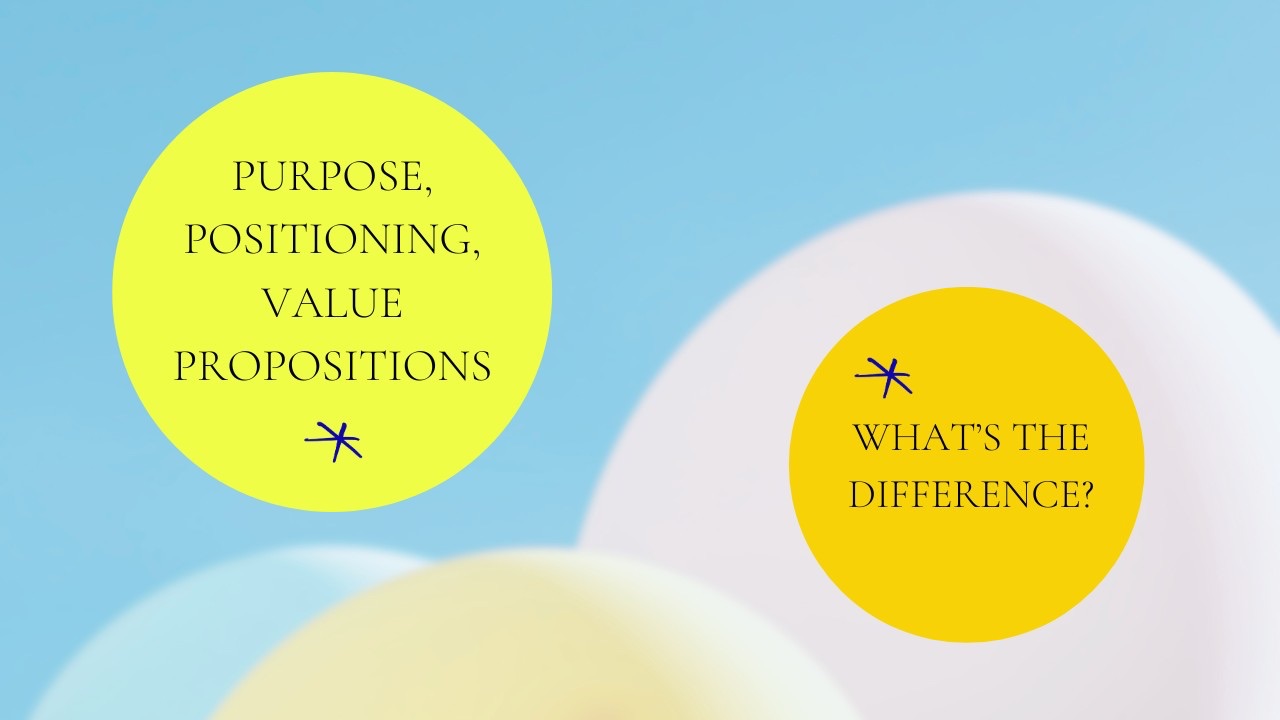
Brand strategy jargon. It’s everywhere. It stops smart people learning how to do brand strategy, and it prevents great ideas from becoming drivers of business growth.
It’s a barrier to clarity and simplicity – key elements of an effective strategy.
Positioning, value propositions and purpose are three of those phrases that can trip people up.
If you don’t know what they are, and how to use them, they can put you off delivering something a business really needs.
If you’re used to using just one of them, it can lead to unnecessary battles with a client, where you’re fighting for the use of one over another without really knowing why you’re doing so.
Using all three together can create confusion.
But so can duplicating the same one too much across different parts of a business.
So let me help you get more clarity.
I’ll address what positioning, value propositions and purpose are – but most importantly what they DO. How they HELP an organization and how and when to use them....
8 Brand Strategy Examples And Lessons From The World's Most Valuable Brands
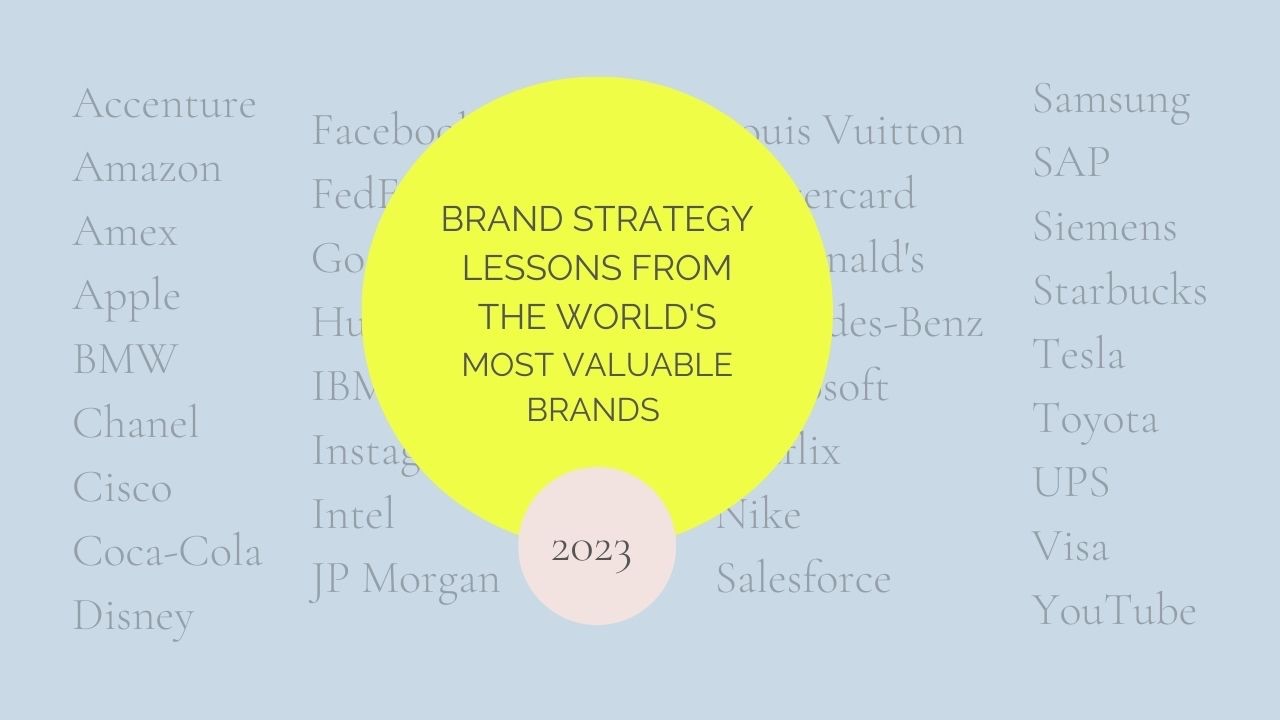
What are the best brand strategy examples to learn from?
Here's a great place to start.
There's a set of ‘superbrands’ that top the charts.
34 of them in total.
Read on to find out who they are, with examples that highlight what to focus on when creating brand strategies for your clients or business.
What are the best brands to study?
There are three global brand valuation studies (Kantar's BRANDZ, Brand Finance and Interbrand) that identify the world's most valuable brands, producing a top 100 list every year. (Brand Finance do a top 500).
They use different approaches to assess brand value, but some brands successfully appear on every one of these lists.
There are 34 in total - and while they are very different businesses, when it comes to brand strategy, they have some things in common.
There are common questions they answer to define what their brands are all about.
And there are some valuable lessons to be learned from their brand strategy stories.
Here's wh...
Why Is Brand Strategy Valuable?

Do you ever need to convince clients of the value of brand strategy?
Are you wondering whether it's worth adding brand strategy to your skillset?
It helps to have some hard proof on why brand strategy is worth investing in.
Fortunately, there's a lot of research available now to help. What it shows is:
- Brands account for up to 50% of the value of a business - so it pays to know what yours is about.
- Strong brands generate superior shareholder returns.
- Brand strategy helps increase revenue by increasing perceived value.
The answers to the questions in a strong brand strategy have been shown to:
- Help businesses outperform competition.
- Increase sales – and make it easier and more motivating for salespeople to sell.
- Improve talent acquisition and retention.
- Attract investors and shareholders.
- Improve business transformation efforts.
- Improve customer acquisition costs.
- Enable brands to command a price premium.
Read on for all the detail…
Why Brand Strategy Is Imp...
Creating Values With Meaning - What To Do and What You Need To Avoid
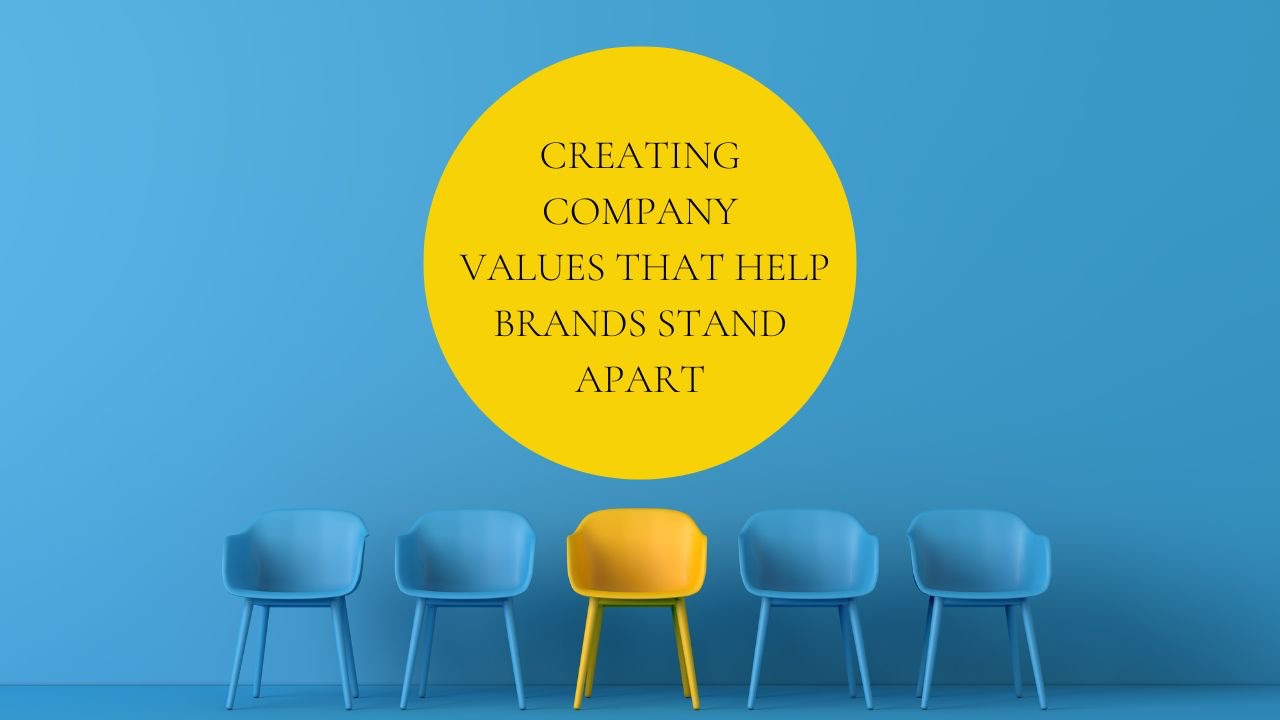
There’s some pretty bad advice out there when it comes to creating values.
It tends to go like this:
- Here are some examples of good values: Innovative, Honest, Open, Customer-Focused, Teamwork, Integrity, Accountability.
- Now just sit down with your leadership team and decide what yours should be.
- Then share them with everyone in your business.
- Oh - and make sure they are brought to life every day by everyone.
This doesn't work well.
It produces a top-down list of generic words that doesn't engage employees or the talent you are looking to attract.
It's a poor springboard for any cultural engagement program, because the words are so generic, no one knows what they are supposed to do to bring them to life.
At best you get business as usual. At worst it creates cynical, dispirited employees who leave to join a competitor with a more compelling culture, expressed in values they share and believe in.
The hard reality is that most employees don't even understand the cult...
8 Books To Help You Get Better At Brand Strategy Development

If you’ve been doing brand strategy for a while, you can feel like you’ve hit a plateau. It's hard to know how to keep growing your skills.
These book recommendations are for you.
There are a few directions you could go to deepen your brand strategy skills and the value you offer clients.
First, identify where you feel a bit stuck from this list. It will direct you to the books, described below, that will help you get better at brand strategy development.
- You work with a lot of marketers, but you know brand strategy has a bigger role in the boardroom. You want to talk confidently to the CEO about the value of brand strategy and how to embed it across the whole organisation. (See books 1 and 3).
- You’re missing case studies on how to implement a brand strategy within a business that go much deeper than brand identity. (See book 2 for big brands and book 7 for start-ups).
- You’ve got yourself into a bit of a mess with your frameworks and tools. You know you’re making it overl ...
A Simple Template For Brand Strategy That All The Best Brands Use

Do you find that jargon is one of the most confusing things about brand strategy?
Should you create a positioning or purpose? Mission or vision? Values or beliefs? A brand personality or archetype?
Wouldn’t it be great if there was just one brand strategy template that works for all brands?
Well, there is, and there’s no jargon in sight.
But it took me a while to get to the right brand strategy template.
10 years ago, I was as confused as you might be feeling.
For the first decade of my career as a brand strategist, I worked at some of the biggest branding and advertising agencies.
I had to sell the agency's brand strategy approach, which included a template that got blank looks from many clients.
It was full of jargon, focused on the thing the agency made most money from (design), and rarely engaged any of the C-suite.
But I knew that a brand strategy should be more impactful than this: it should give a business the clarity, focus and direction they needed to grow.
Becau...
Brand Strategy Development - What All The Best Brands Do and Why
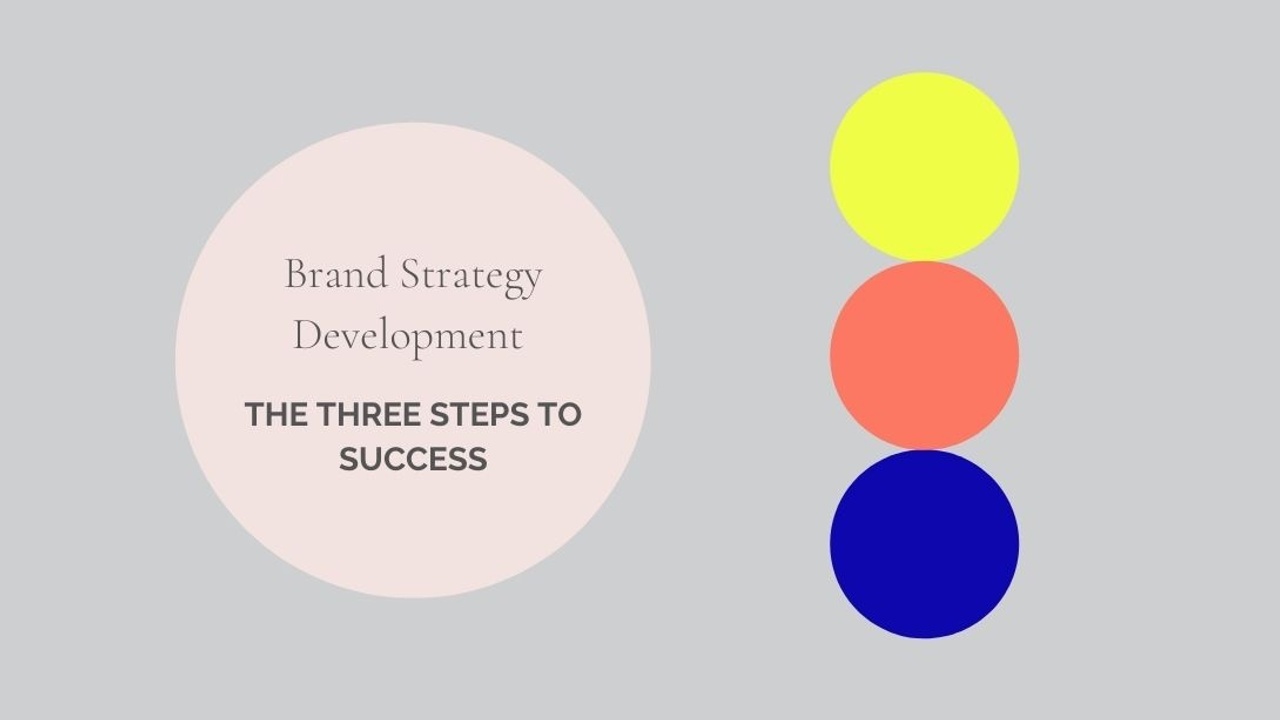
Developing a brand strategy is one of the most important things for any organisation to get right. Brand strategy has been proven to increase market share, help companies grow faster than others, help to retain employees and attract new talent and focus and improve innovation.
The world's best brands follow a tried and tested brand strategy development process that I want to share with you here. They know if you get your brand strategy right, it can be one of the best long-term levers for business growth.
But this long-term aspect of a brand strategy is one of the challenges.
Because companies don't change their brand strategy often, there are not many people within an organisation who know how to create one. Experienced CEOs and CMOs can work for decades without ever spearheading a brand strategy project.
So if you’re suddenly in this position of needing to create a brand strategy for your client or business, you need an approach that you can depend on.
I’ve been lucky enou...
Time efficient brand strategy. How to get those projects DONE!
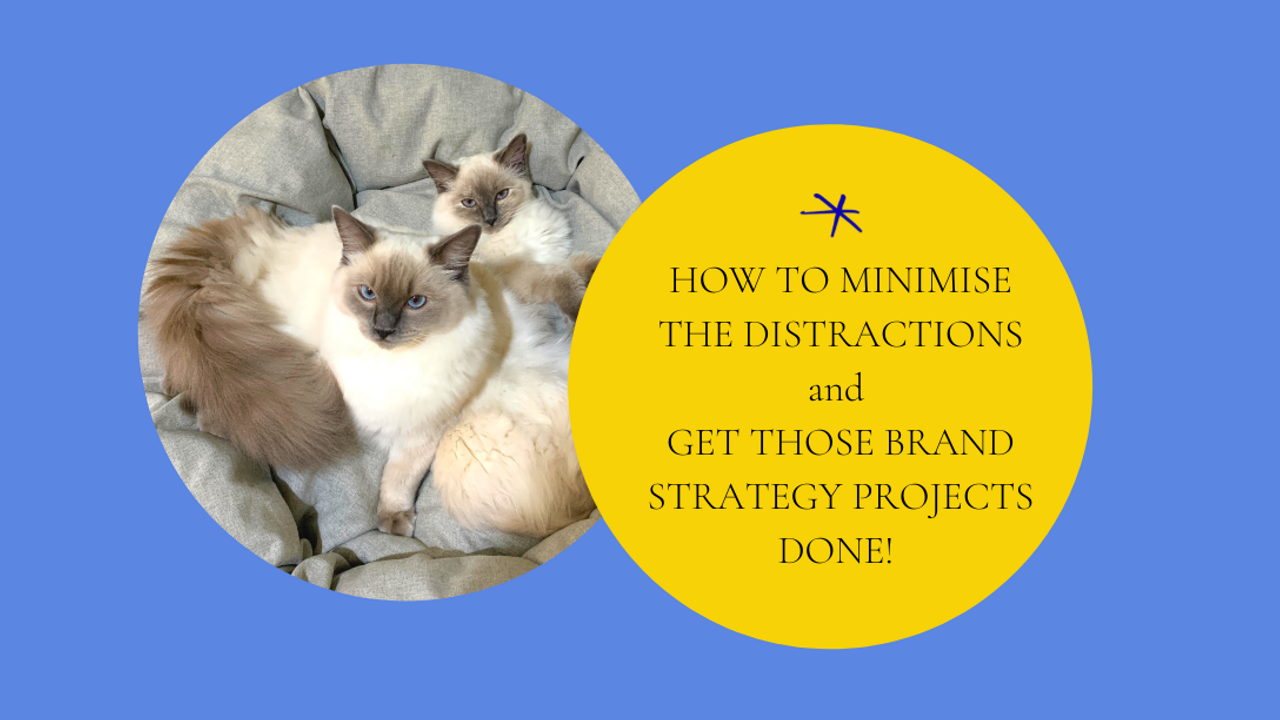
These are my cats, Coco and Cotton.
Just two of a multitude of distractions that can mean brand strategy projects for my clients may not get done as efficiently as I’d like.
As much as I LOVE creating brand strategies, they can be a bit of a slog. And a recent survey of the people on my newsletter showed that the topic of being ‘brand strategy efficient’ was one people wanted some guidance on.
So here’s what I’ve learnt, the hard way, to shortcut this process for you.
How to get brand strategy projects done more efficiently
1. Read what you need to read, only when you need to
I used to be so guilty of this one. A transcript of an interview would come in that I needed to analyse later as part of a report; I couldn’t resist a quick skim through.
Flicking through a book or article that I wanted to pull from for a blog in a month’s time.
An email that I’d already scheduled to deal with tomorrow.
An article that I'd popped into my reading list for later, but still skim-read.
R...


